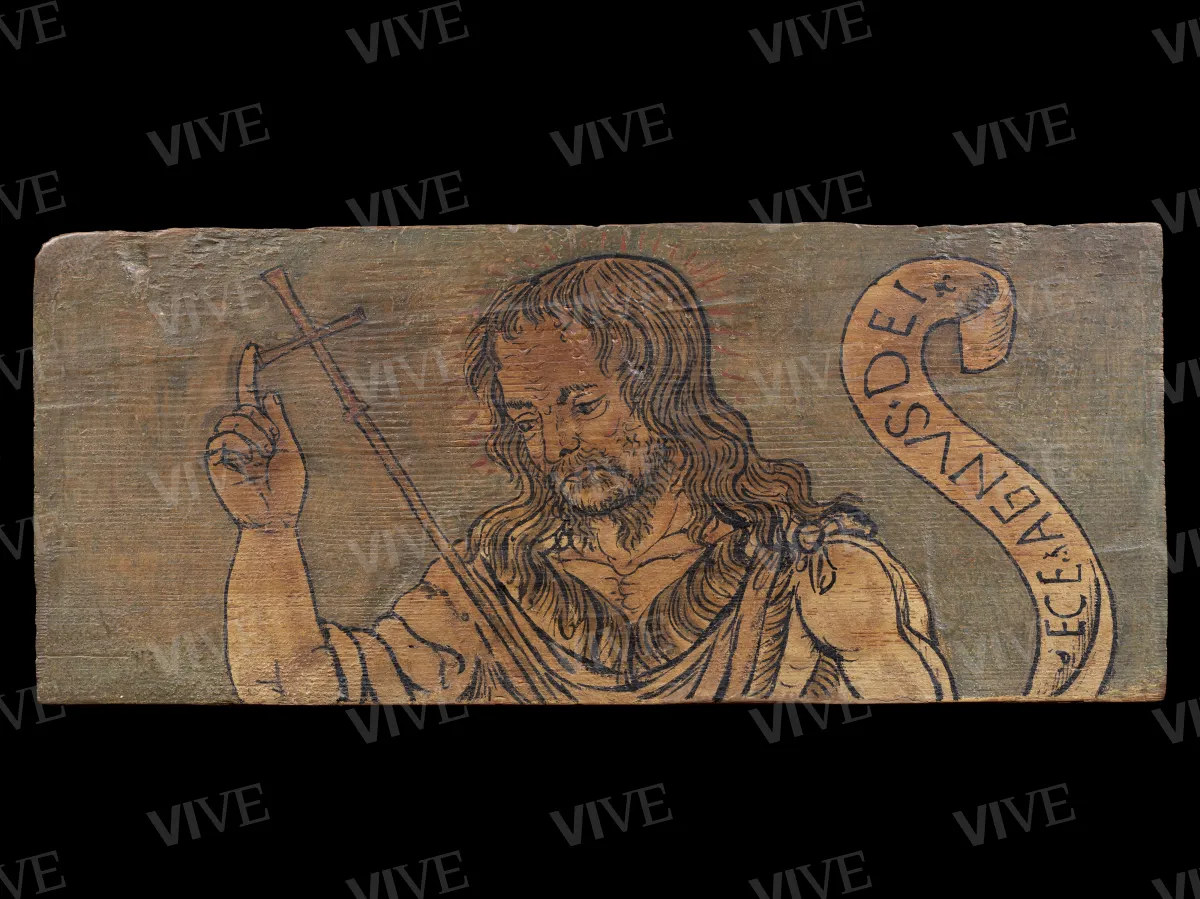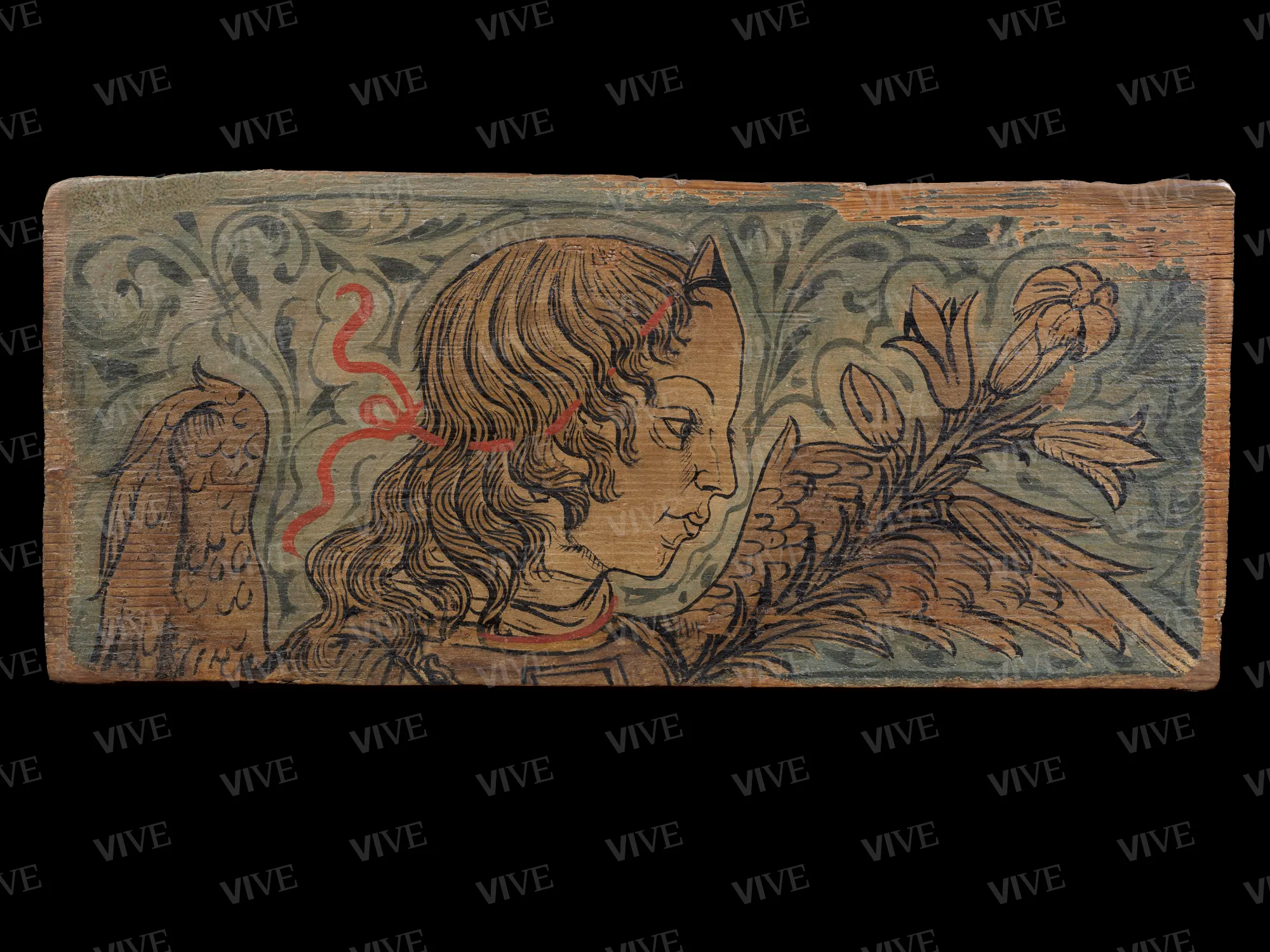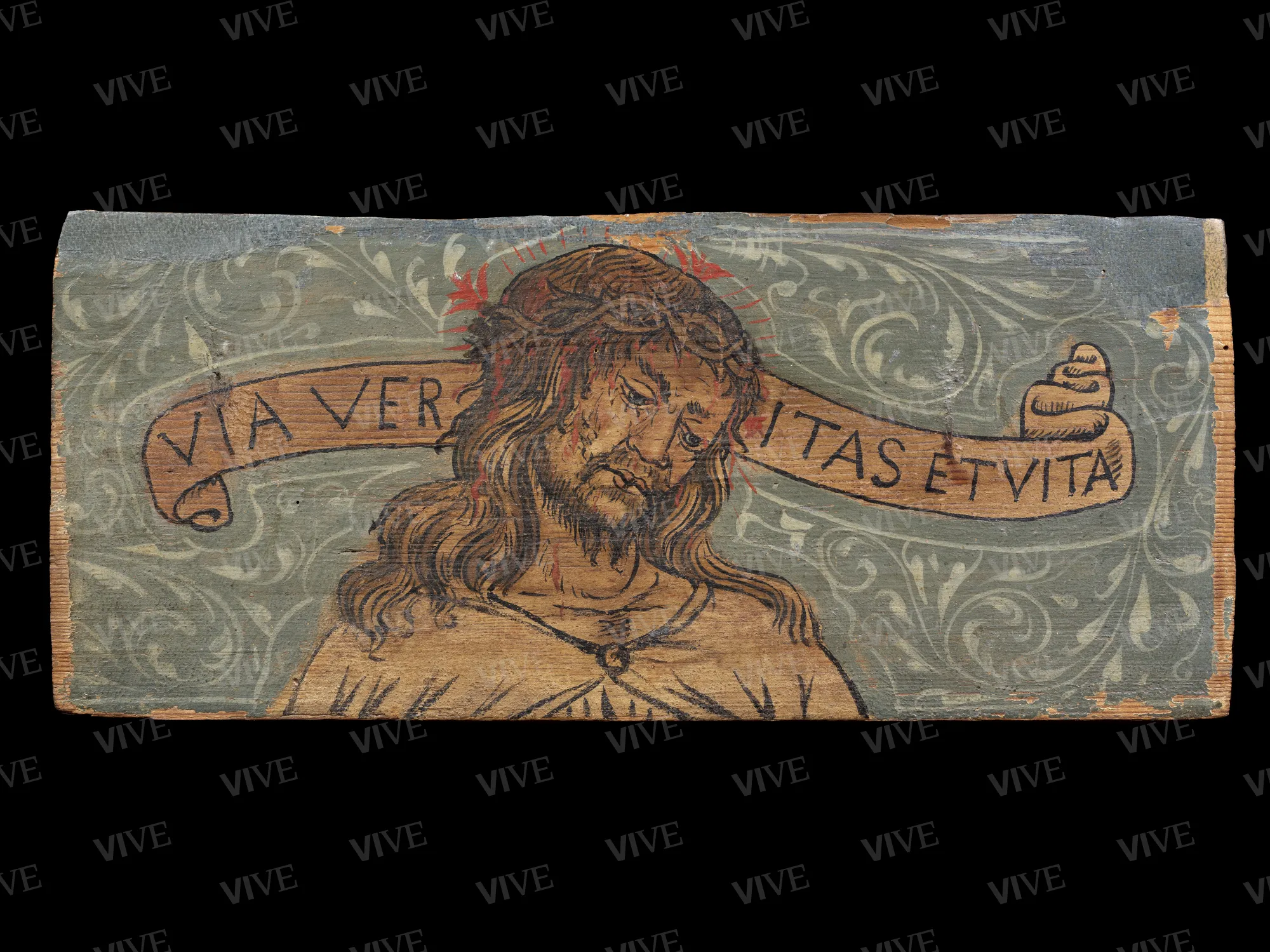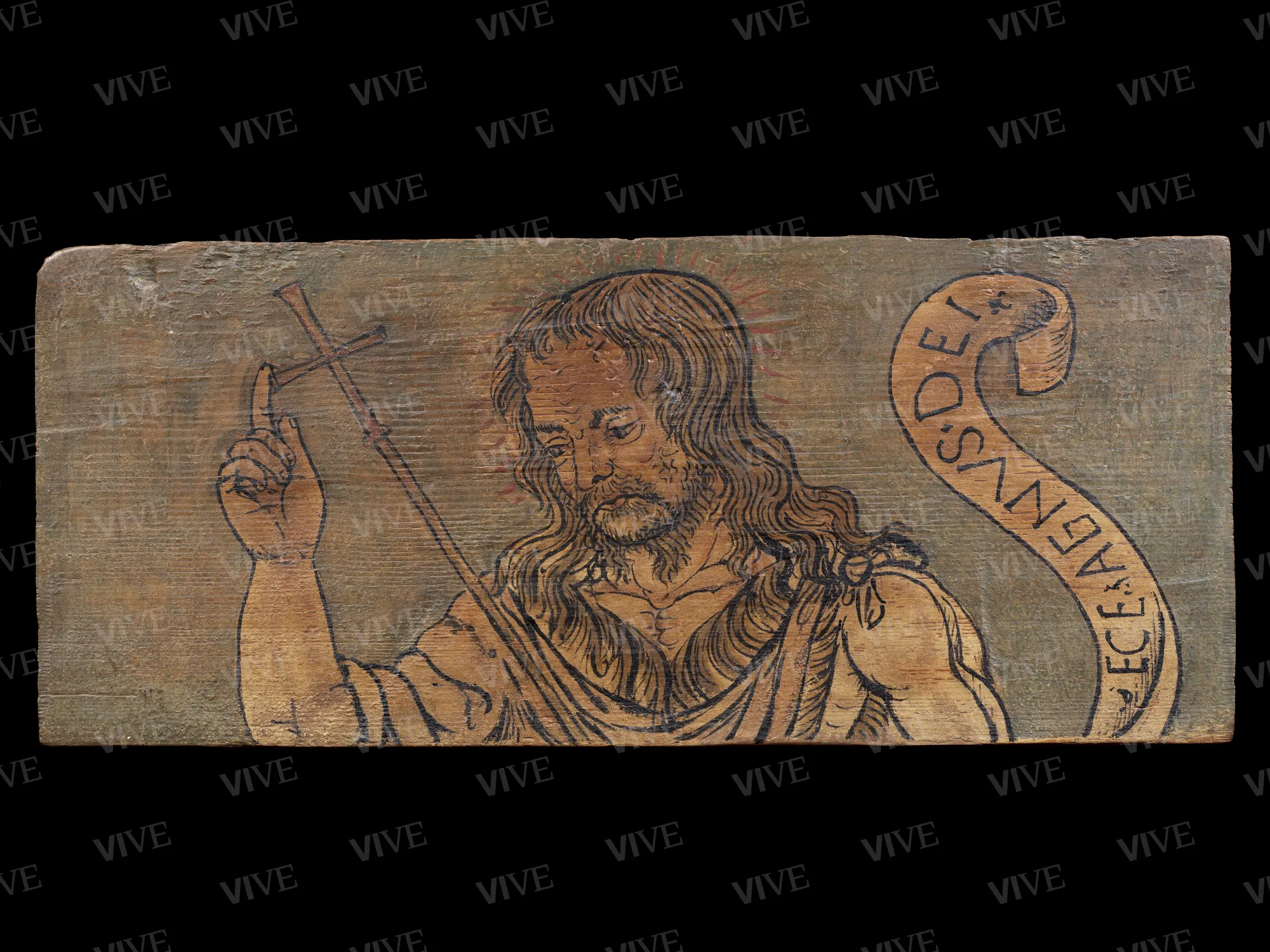Archangel Gabriel; Christ in Pity; Saint John the Baptist
Lombard milieu Last quarter of the 15th century
The three ceiling panels, attributed to the Lombardy region of the late fifteenth century, portray the Archangel Gabriel (a), Christ in Pity (b), and John the Baptist (c), focusing on their faces and upper torsos. These figures are set against a watery green background adorned with stylized phytomorphic motifs. Their outlines are distinctly traced with pronounced black lines, while the flesh tones are achieved by preserving the wooden surface of the support. Red is utilized for specific details such as the archangel’s fluttering ribbons, Christ's blood, and halo.
The three ceiling panels, attributed to the Lombardy region of the late fifteenth century, portray the Archangel Gabriel (a), Christ in Pity (b), and John the Baptist (c), focusing on their faces and upper torsos. These figures are set against a watery green background adorned with stylized phytomorphic motifs. Their outlines are distinctly traced with pronounced black lines, while the flesh tones are achieved by preserving the wooden surface of the support. Red is utilized for specific details such as the archangel’s fluttering ribbons, Christ's blood, and halo.
Details of work
(b) Christ in Pity: height 19.6 cm; width 45.9 cm;
(c) Saint John the Baptist: height 19.7 cm; width 45.5 cm.
Catalog entry
These panels originate from the collection of José Gallegos and were acquired by the then Regia Galleria d’Arte Antica of Palazzo Corsini in Rome, at an undetermined date, likely between 1909—when the first auction of some art objects from the Gallegos Collection took place—and 1917, the year of the painter and collector’s death. Ceiling panels with sacred subjects are notably rarer than those depicting naturalistic and zoomorphic elements, portraits of distinguished men from antiquity and contemporary times, coats of arms, and heraldic motifs. They predominantly originate from religious complexes, such as the series from the rectory of San Lorenzo in Lodi, the Old Refectory in the convent of the church of Santa Maria del Carmine in Brescia, or the monastery of San Pietro in Oliveto in Brescia. The three panels examined here likely also originated from an ecclesiastical setting and were part of a larger complex. This complex certainly included a depiction of the Virgin Annunciate (as indicated by the presence of the archangel holding a lily) and other saintly figures arranged opposite each other, as was customary. The almost xylographic style of these figures, their half-length portrayals, the chromatic contrast between ochre and blue, and the presence of scrolls with inscriptions in Latin capitals devoid of any archaeological pretensions are characteristics also observed in the significant series of panels from the hall of Palazzo Ghiringhelli in Bellinzona, which are now partially housed in the local Museum of Castelgrande. These panels are believed to have been created between 1470 and 1480 (Segre 2018). However, it should be noted that our figures exhibit a graphic style distinct from the more fluid representations found in Bellinzona. Their almost engraved nature can also be seen in other Lombard panels, such as those aforementioned from Santa Maria del Carmine in Brescia and the rectory of San Lorenzo in Lodi, both cycles dating from the last two decades of the fifteenth century.
The works examined in this analysis have not been previously published.
Lorenzo Pirazzi
Entry published on 27 March 2025
State of conservation
Fair.
Inscriptions
On the scroll behind Christ (b): “VIA VERITAS ET VITA”;
on the cartouche of Saint John the Baptist (c): “·ECE [sic]·AGNUS·DEI·”
Provenance
Rome, Collezione José Gallegos [early 20th century];
Rome, Regia Galleria d’Arte Antica, until 1919;
Rome, deposits of the Museo Nazionale del Palazzo di Venezia.
References
Segre Vera, Le tavolette del soffitto di Bellinzona e le loro tangenze tematiche con i soffitti di Viadana (Mantova), di Lagnasco (Cuneo) e della Francia meridionale, in Bourin Monique, Marubbi Mario, Milanesi Giorgio (a cura di), Storie di animali e di iconografie lontane, Atti dell'Incontro internazionale di studiosi delle tavolette da soffitto e dei soffitti dipinti medievali (Viadana 2017), Viadana 2018, pp. 233-276.


















